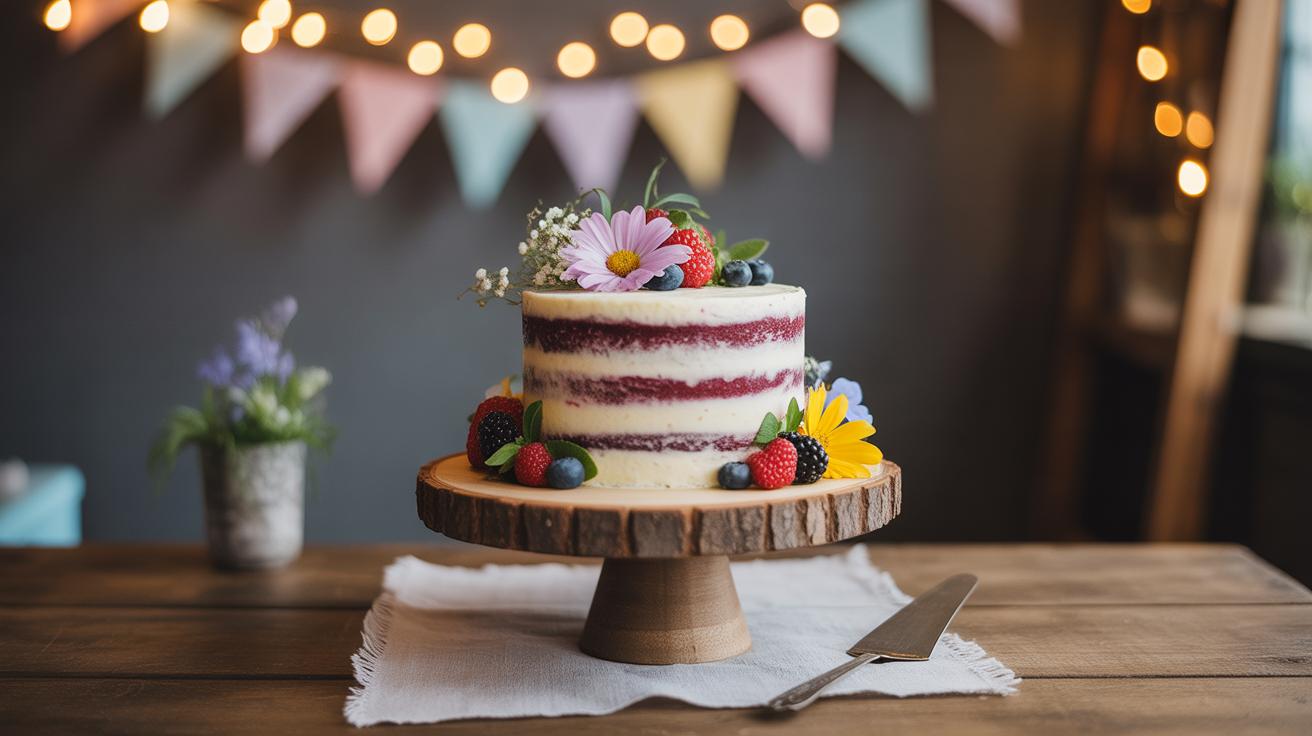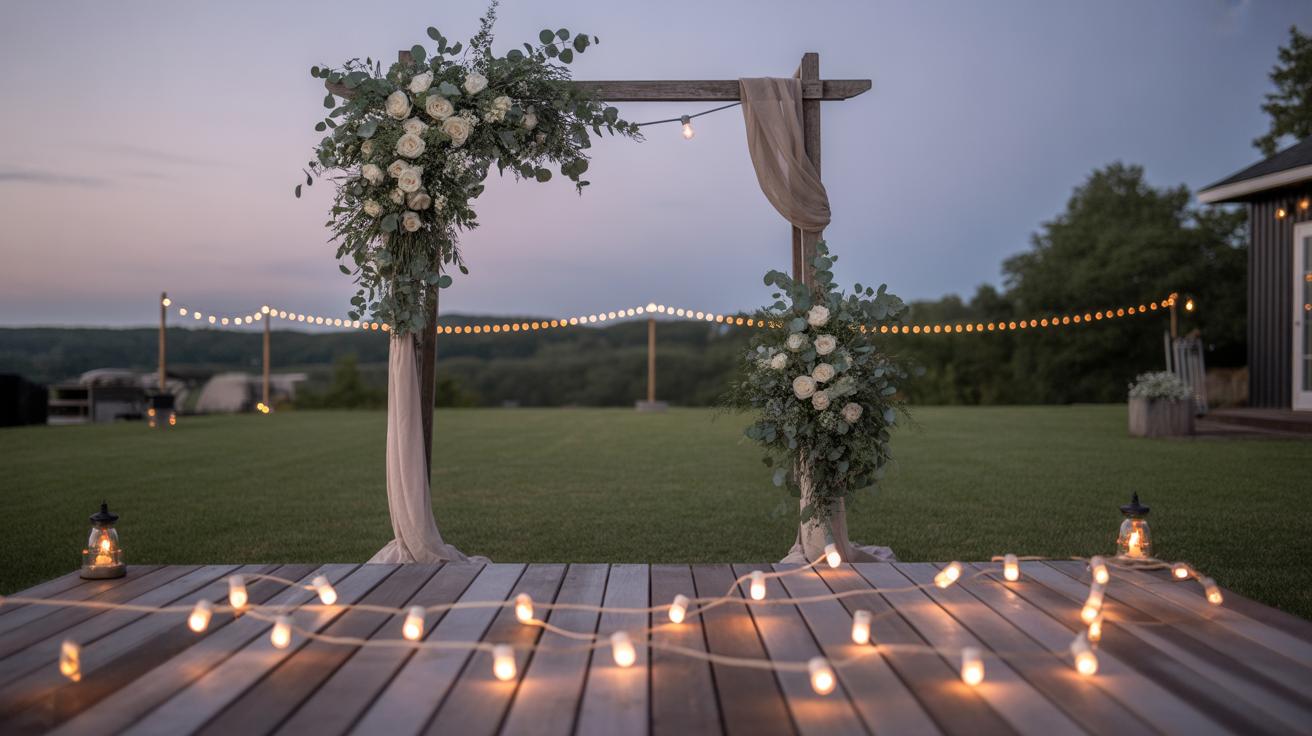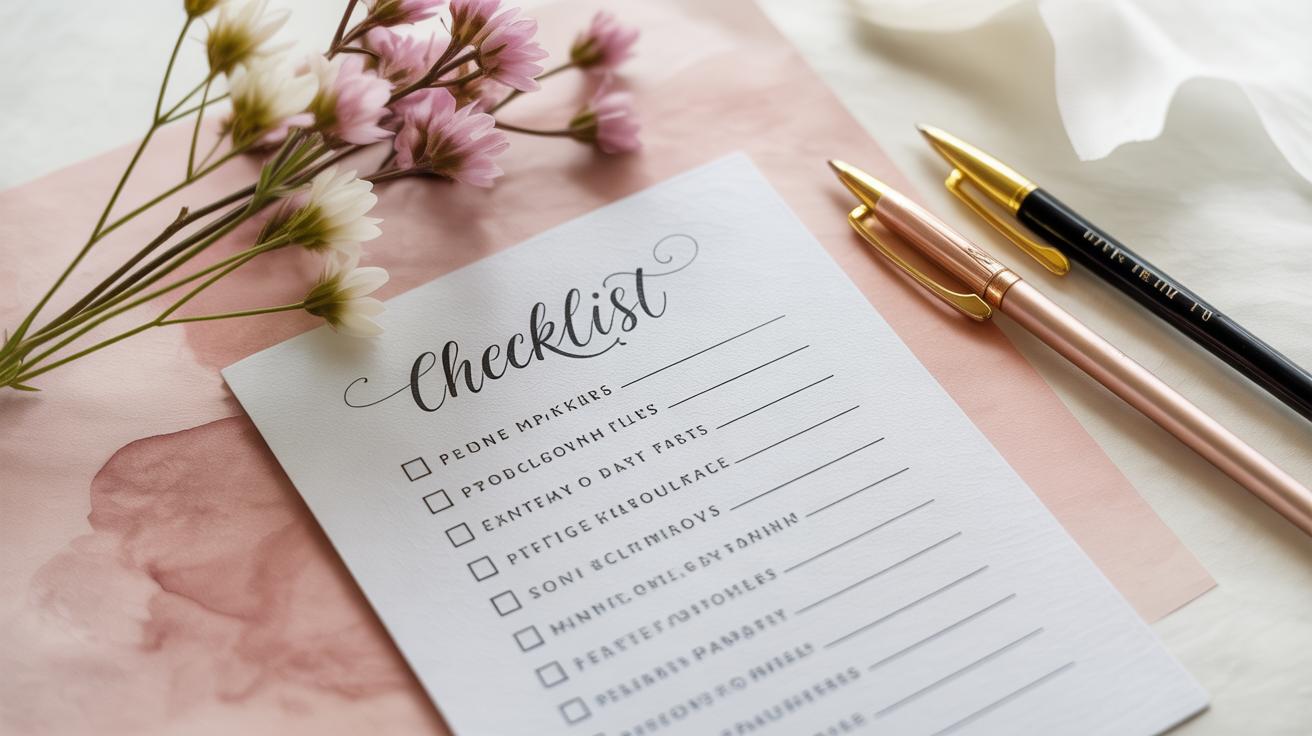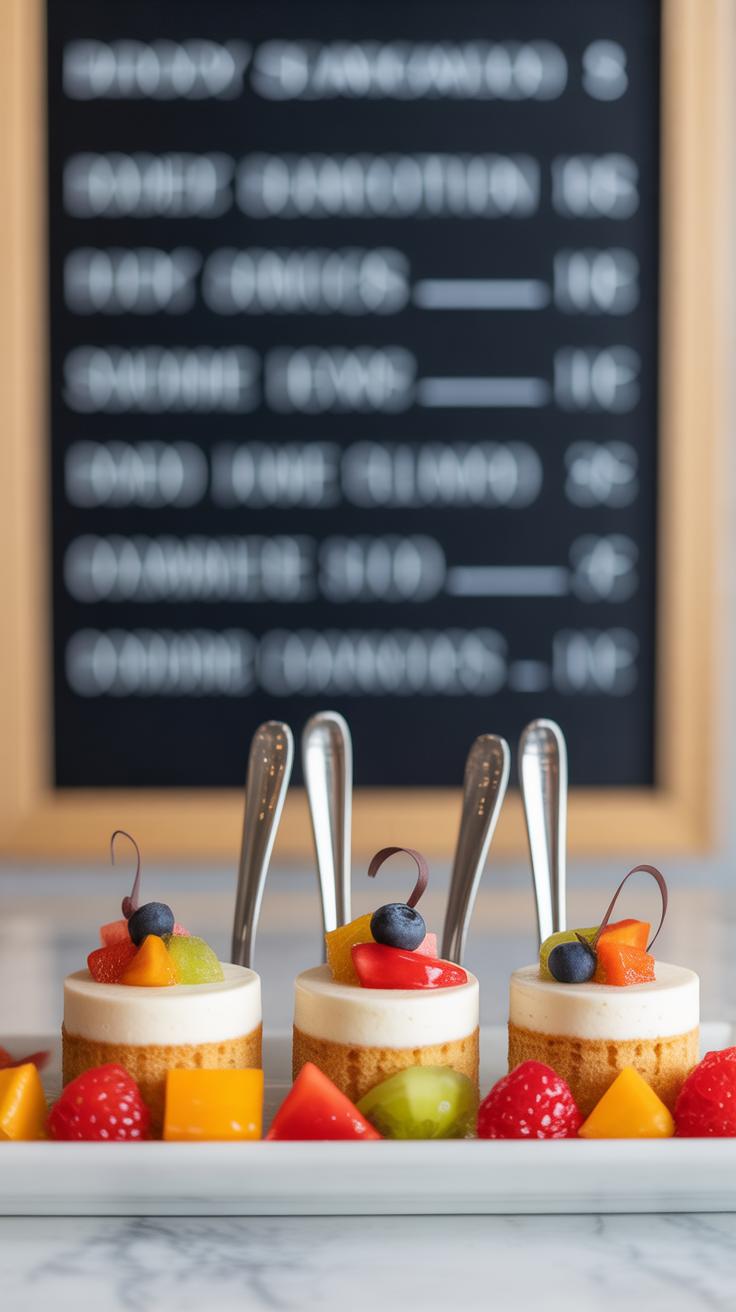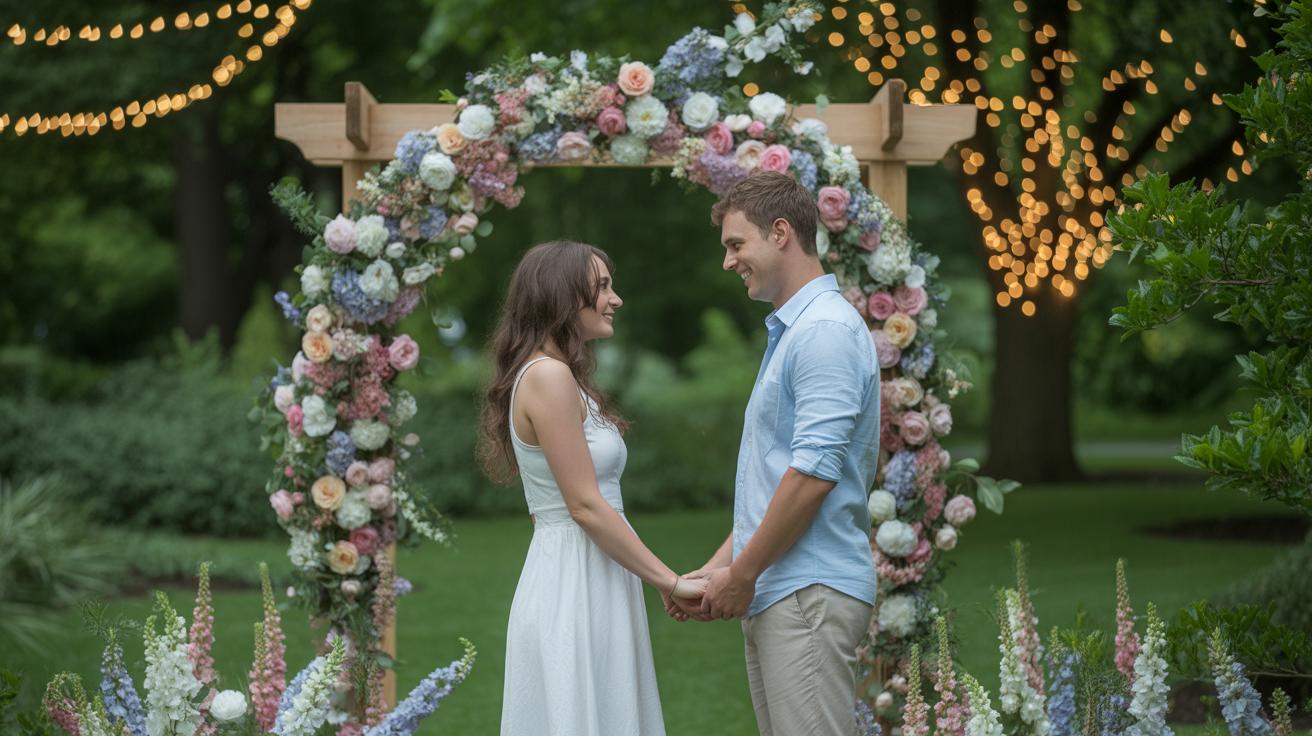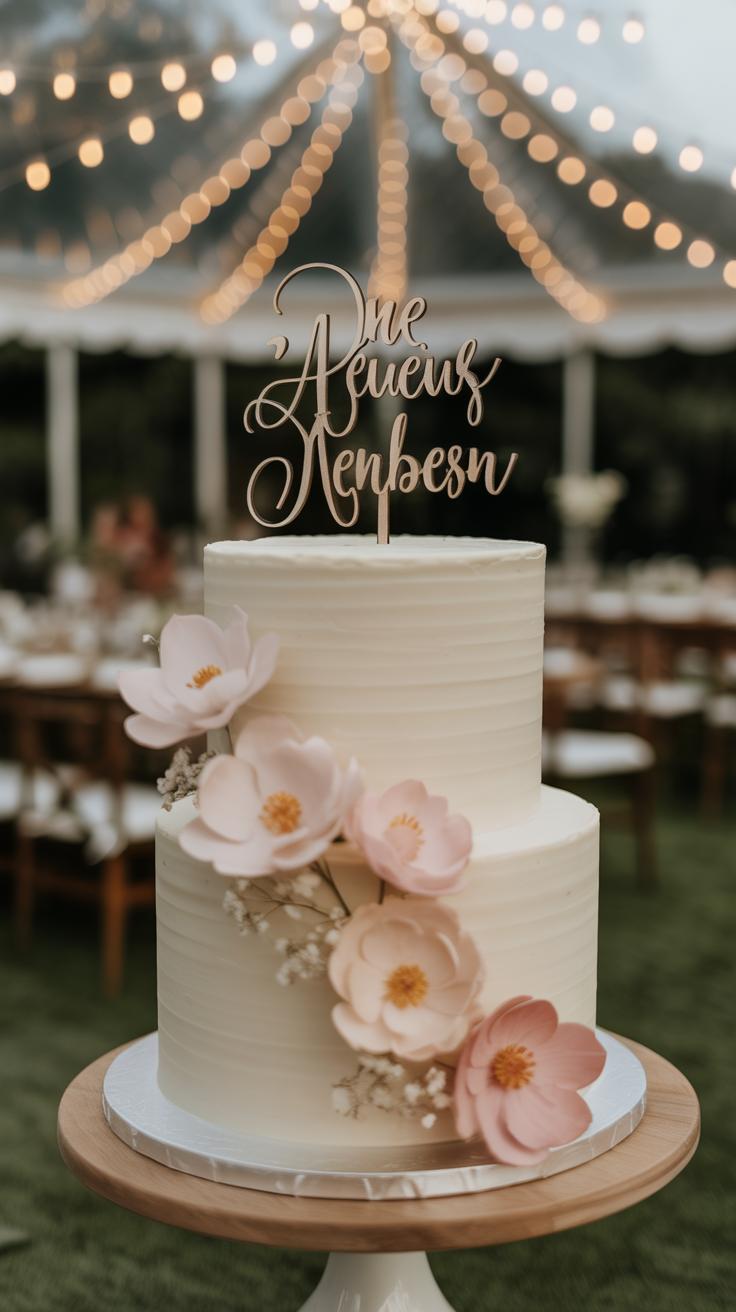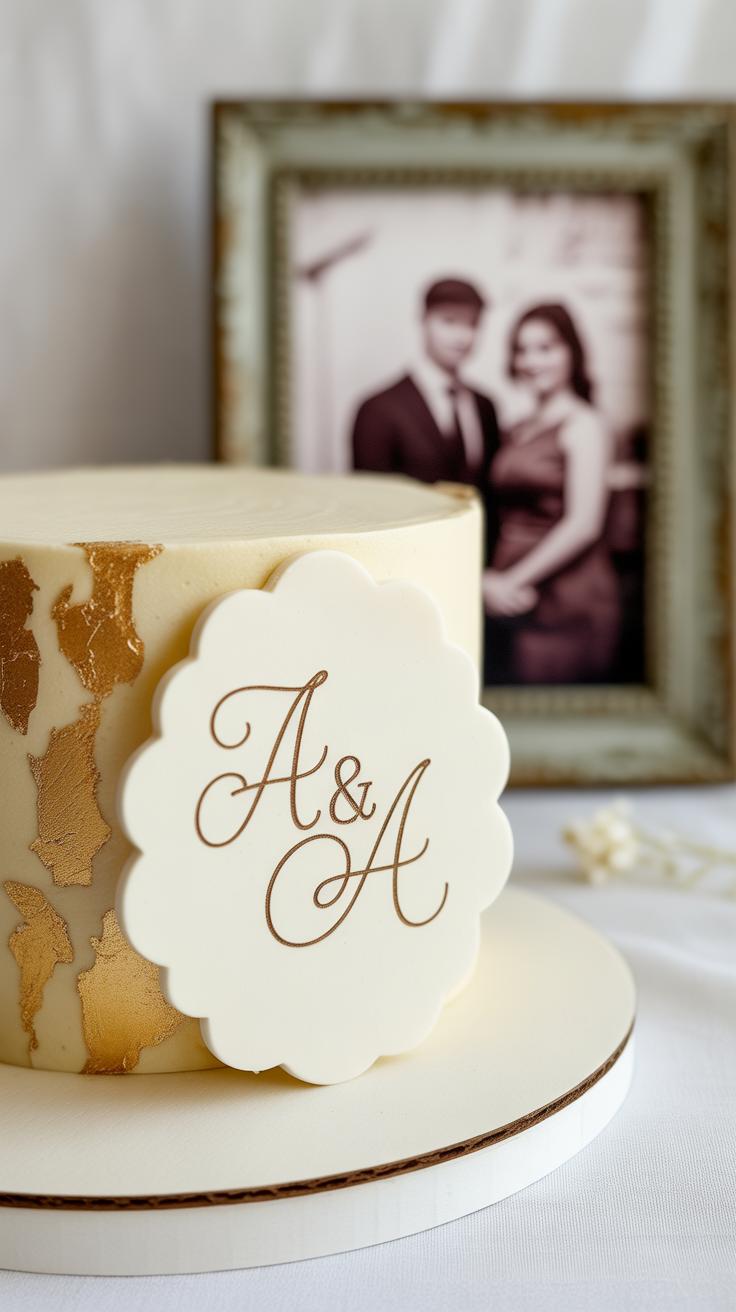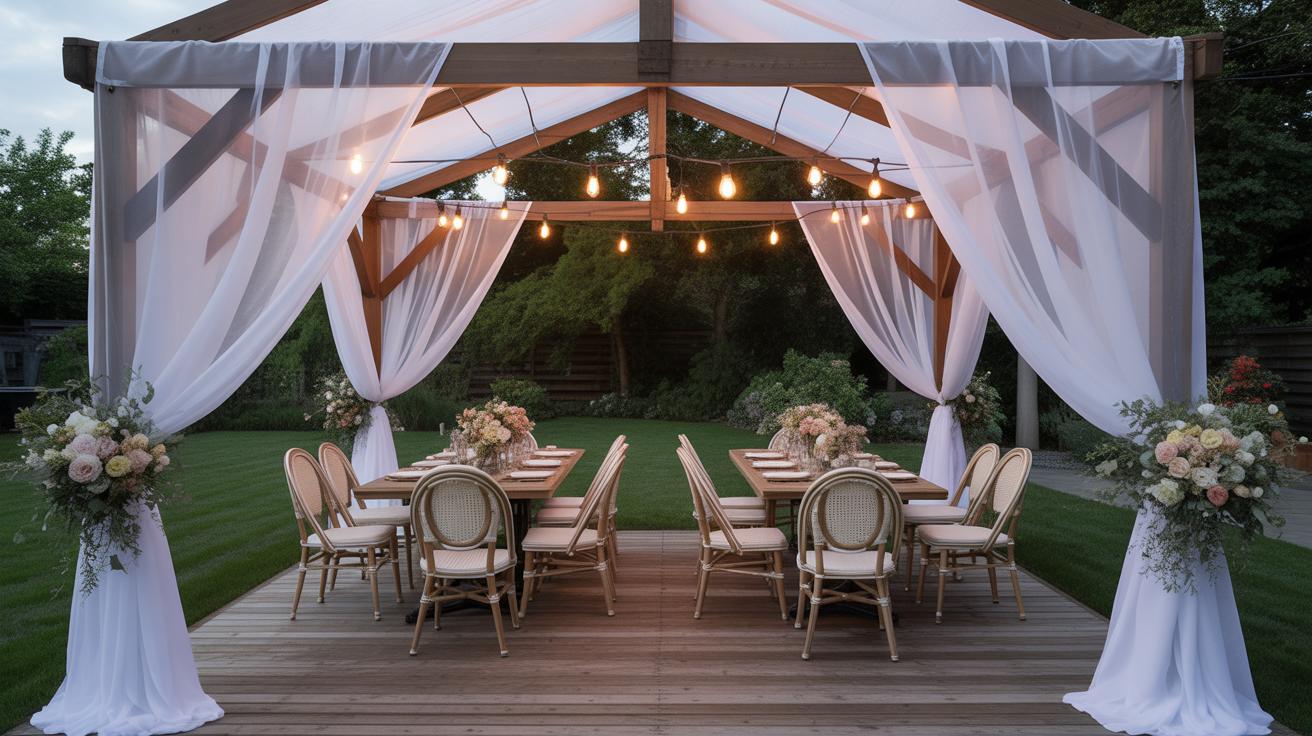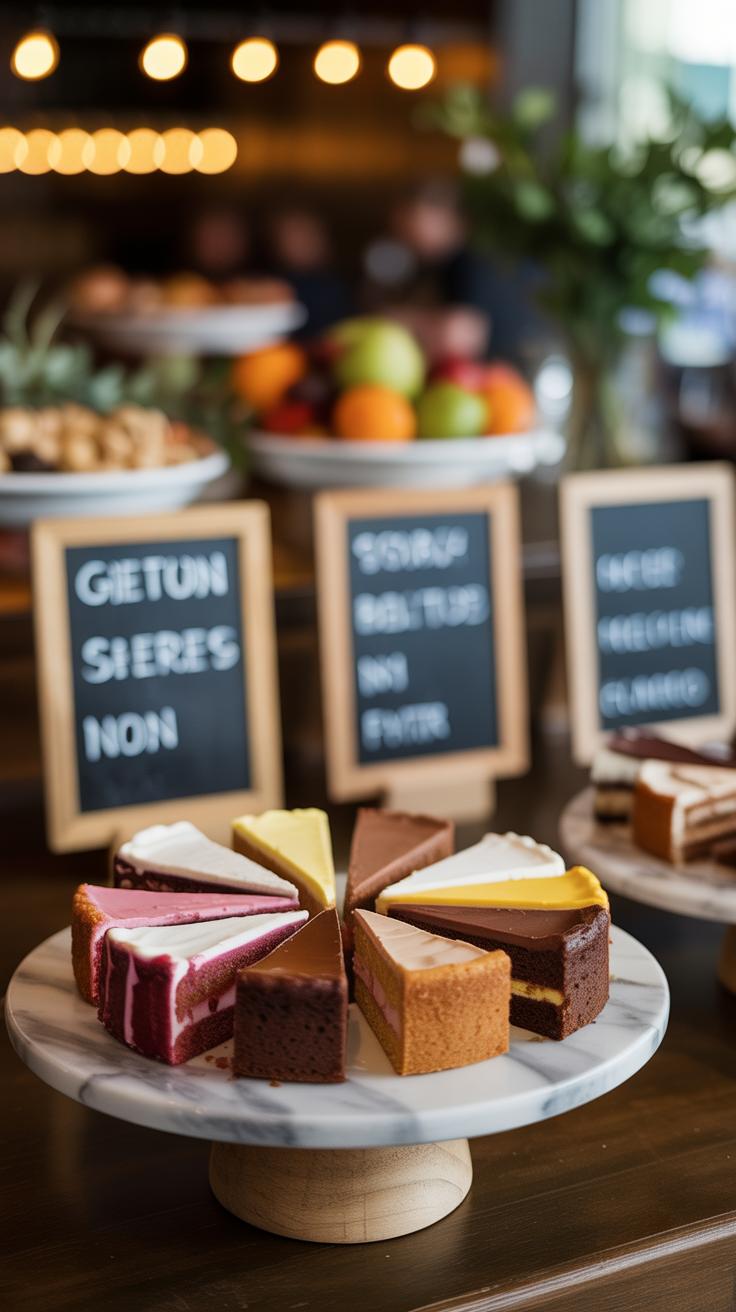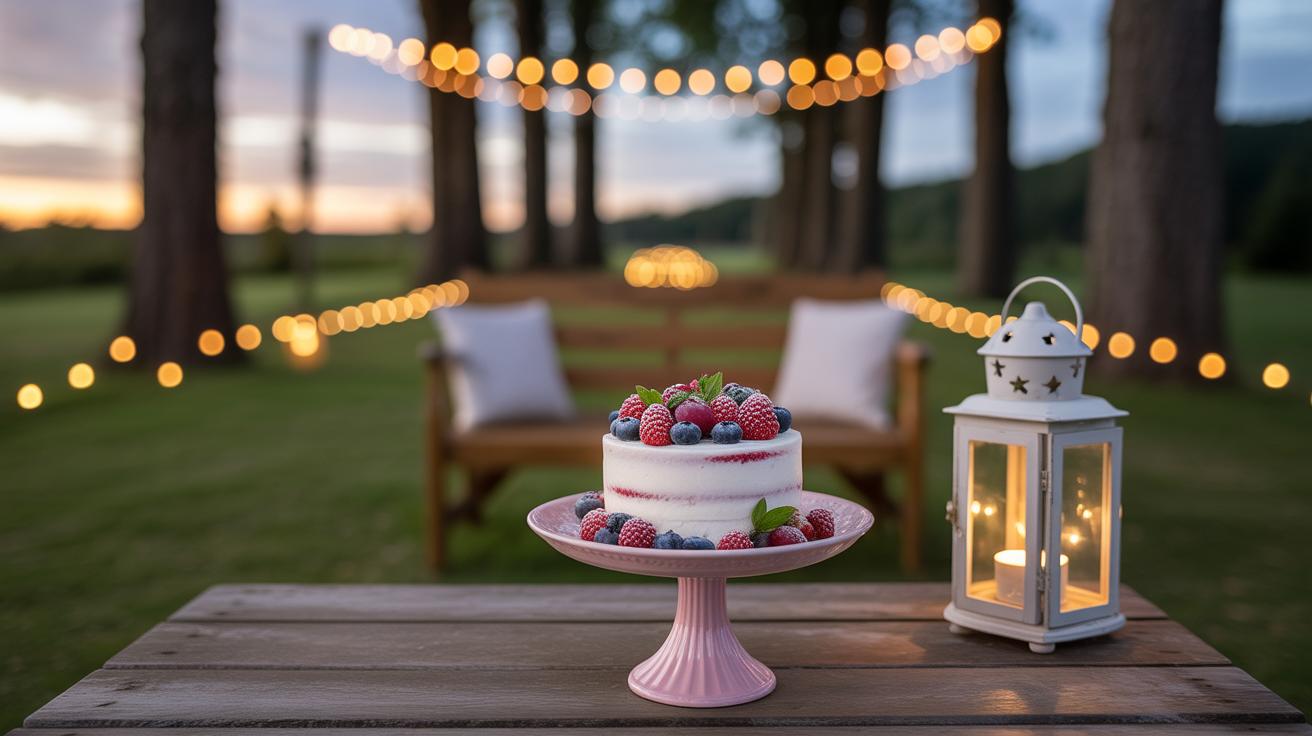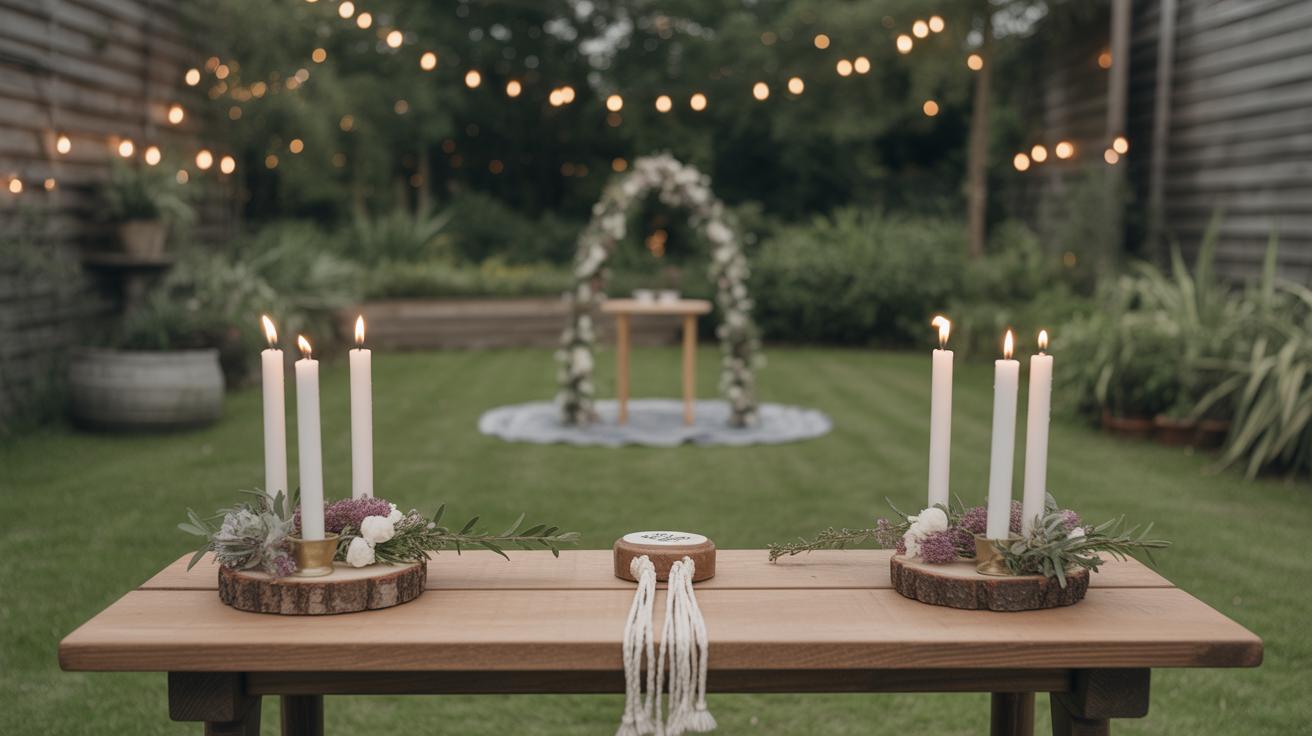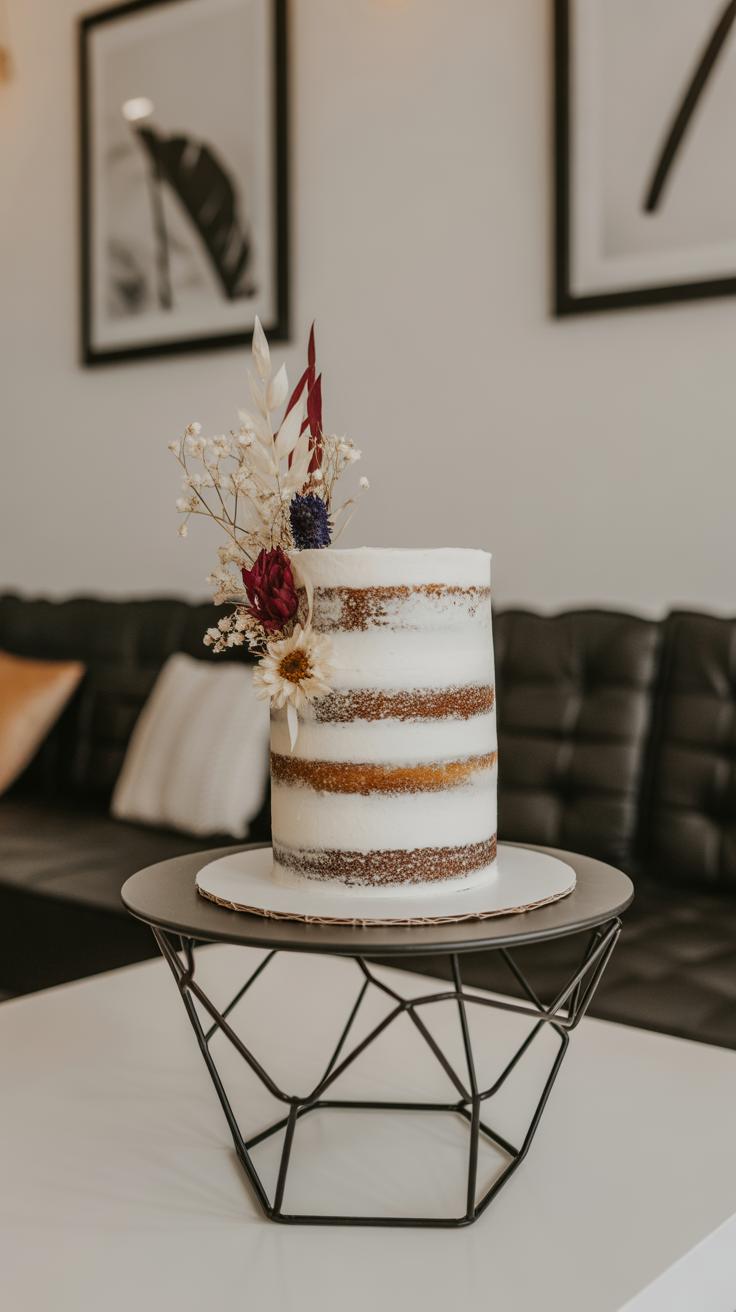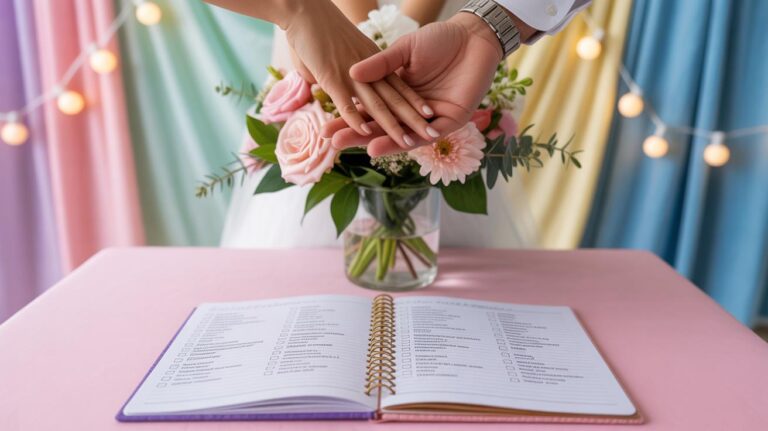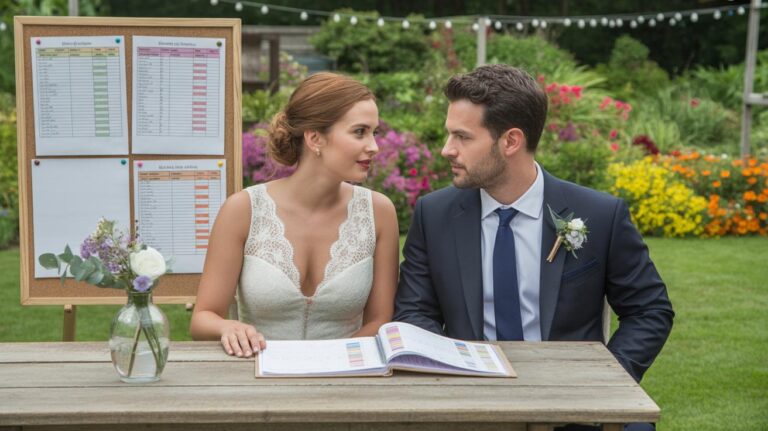Introduction
Planning a wedding means making many choices, and one of the most delicious decisions is the wedding cake. Small wedding cakes are becoming more popular for couples who want to save money, reduce waste, or simply prefer an intimate celebration. Despite their size, these cakes don’t have to compromise on taste or style.
This article explores how you can select big flavor ideas for small wedding cakes. You will learn about flavor combinations, design options, and practical tips to make your cake a memorable centerpiece. Whether you want something traditional or unique, this guide will help you create a cake that fits your day perfectly.
Why Choose a Small Wedding Cake
Couples might choose a small wedding cake for several reasons, often balancing personal taste with practical concerns. One that comes up a lot is budget — weddings can get expensive, and smaller cakes often come with a friendlier price tag. It’s surprising how much you can save by going smaller without sacrificing style or taste. I’ve heard stories of couples who splurged on the cake flavor and decoration but kept the size modest, and everyone still felt like it was a special part of the day.
Then there’s the issue of waste. Big weddings often leave behind slices of cake that nobody eats, and that can feel wasteful, especially for thoughtful couples. Small cakes help cut down on leftovers, making the event a bit more environmentally conscious, even if that wasn’t the original plan. You might even wonder, what’s the point of baking ten extra layers if they just end up uneaten?
Trends also push toward smaller cakes. Intimate weddings and minimalist styles have become popular recently, making dainty cakes a kind of statement piece. They can feel more personal, somehow. So you get a smaller cake that still looks elegant but fits the vibe of a modern celebration. It’s a shift from tradition, yes, but one that seems to click with a lot of couples these days.
Cost Benefits of a Smaller Cake
Going small usually means spending less. Fewer tiers, smaller diameter — basic math. But saving money doesn’t mean settling for less. Bakers often suggest upgrading flavors or adding unique design details to the smaller cake to keep it looking luxurious. For instance, a cake with rich fillings or hand-painted decorations can feel just as special as a towering confection.
Plus, a small cake means less time and labor required for baking and decorating. That translates into lower costs, saving not just ingredients but also the baker’s effort and time. If you’ve chatted with bakers, you might know how hourly charges can add up quickly. It’s easy to get an elegant cake without shelling out for extra height or multiple layers that may go unnoticed.
Sometimes, cakes are paired with cupcakes or smaller treats to spread out servings without piling on the price. This approach keeps things affordable and visually interesting. You still get a “wow” factor, just in a more compact, budget-friendly package. It’s practical and pretty, a combination many couples appreciate.
Reducing Food Waste
One of the less talked-about benefits of a small cake is how it tackles food waste. Large wedding cakes often come with overestimations — better to have too much than too little, right? The problem is, leftover cake often sits untouched or ends up tossed. Most guests fill up on dinner and sweets, and then a lot of cake lingers uneaten.
Smaller cakes mean you’re more likely to hit closer to the real number of servings needed. If you’re careful about your guest count, you might avoid those sad, half-full cake boxes. Plus, smaller cakes make it easier to plan portions, preventing an overload of uneaten slices. Reducing waste not only feels better morally but also avoids the awkwardness of guests taking home cake bags no one wants.
It’s interesting how food waste ties into bigger conversations about sustainability and respect for resources. When you opt for a smaller cake, you’re contributing to that without making a big deal out of it. And really, isn’t that part of what many couples want? To celebrate thoughtfully, in a way that feels right for them and the planet.
Understanding Popular Wedding Cake Flavors
Picking a flavor for your small wedding cake can feel like more than just a simple choice. After all, it’s one of the few moments everyone will really taste what you’ve chosen. Some flavors stick around the long haul because they please a wide range of folks — it’s almost like they’re baked into tradition.
Classic Flavors That Never Fail
Vanilla, chocolate, and red velvet often top the list for a reason. Vanilla is soft, familiar, and pairs well with almost any frosting, making it a safe yet satisfying choice. Chocolate brings that richer, deeper note, which many guests appreciate. Red velvet carries a slight tang and a stunning color that makes a subtle statement—sometimes it feels a bit more special without being over the top.
These flavors aren’t flashy but tend to work well simply because they please most palates. I know couples who’ve chosen vanilla just to keep things uncomplicated. And the truth is, you can never really go wrong with them, especially if you want something that won’t divide your guests over taste.
Unique Flavors to Consider
If you want your cake to show a bit more personality, you might think about flavors that surprise a little. Lemon offers a bright, refreshing hint that can cut through sweetness. Lavender can add a floral twist that’s subtle but distinct, giving your cake a gentle aromatics boost. Or maybe you like spice blends—cinnamon, cardamom, or even chai—that bring warmth and something unexpected.
These aren’t the most common choices, but they can make your cake feel more like *your* cake—something memorable. Then again, sometimes those unique options aren’t everyone’s favorite, so maybe it’s worth thinking about how adventurous your crowd is. Would you want your cake to be a conversation starter or just a comforting treat?
Pairing Flavors to Create Big Taste
When working with small wedding cakes, every bite counts. You want the flavors to feel like they’ve been carefully crafted, even if the cake itself is modest in size. One way to achieve this is by thoughtfully layering cake and filling flavors that complement each other. For example, chocolate paired with raspberry isn’t just a classic—it adds a balance of rich and tart that keeps each slice interesting. Similarly, a lemon cake with blueberry filling brightens the palate and can surprise guests in a lovely way.
Think about textures as well as flavors. A moist cake layer with a smooth, slightly tangy filling can enhance the overall experience. When you pick fillings, don’t shy away from subtle contrasts that might seem unusual at first. Sometimes, unexpected combos, like almond cake with cherry preserves, work better than you’d imagine.
Frosting is your final chance to add a flavor dimension and tie everything together. Buttercream tends to be sweet and creamy, perfect if you want softness without overwhelming your palate. Cream cheese frosting adds a pleasant tang and pairs well with spice or carrot cakes. Ganache offers a denser, chocolatey richness that feels indulgent, especially on smaller cakes where every taste lingers.
Imagine biting into a cake where each layer reveals something new—a subtle fruitiness, a hint of tartness, a rich chocolate note. That’s the goal with pairing flavors on a small scale. You may want to try a few combinations before settling on your final mix. After all, small cakes let you experiment without too much risk—and the payoff is a big flavor experience packed into every slice.
Designing a Small Wedding Cake That Impresses
When working with a small wedding cake, every detail matters—sometimes more than with larger cakes. You might think a smaller size limits your options, but it actually forces creativity, which can lead to some truly striking results. For example, simple icing techniques like a smooth buttercream finish or subtle texturing can create a sleek look without overwhelming the cake’s size. Or think about using fresh flowers—not overly crowded, but carefully chosen to highlight one side or the top. I’ve seen how adding just a few blooms can make a compact cake look unexpectedly bold.
Using Decorations for a Bold Look
Decorations play a big role in making a small cake stand out. Edible gold leaf, when applied sparingly, brings a touch of luxury without competing with other elements. Fresh flowers connect the cake to the wedding’s natural theme, but they needn’t be elaborate; a single spray or a cluster of tiny buds sometimes speaks louder than a heavy arrangement. Clean icing work matters too—sometimes a minimalist approach with sharp edges or soft, flowing lines can catch the eye better than complicated designs. You might wonder if less really is more here. I think it often is, especially when the artistry is in the details.
Shapes and Sizes Choices
Small cakes don’t have to mean just one round tier. Consider multi-tiered mini cakes, which stack flavor and visual impact without taking up much space. Naked cakes, with minimal frosting and exposed layers, bring a rustic charm that pairs well with natural decorations—perfect if you want something less formal. Then, there’s the single-serve style: mini cakes or even elegant cupcakes arranged thoughtfully can create a table centerpiece that’s both personal and practical. Choosing shapes beyond the classic circle—like squares, hexagons, or gentle domes—adds that subtle twist which helps your cake feel unique, even if it’s modest in size.
Personalizing Your Cake with Meaning
Your small wedding cake can say more about you than you might expect. Think of it as a tiny stage where your story unfolds, layer by layer.
Start with flavors that speak to you and your partner. Maybe it’s a childhood favorite, like a lemon drizzle cake that reminds you both of summer visits to your grandparents. Or perhaps a cultural touch, like a rich matcha or a spiced chai, that honors your heritage. These choices don’t have to be traditional wedding staples—they should feel personal, even if a bit unexpected.
When it comes to decorations, subtle details can carry weight. Consider adding a small charm that represents a shared passion, like a mini book for avid readers or a tiny compass for travelers. Colors matter too; a hint of the beloved hometown team’s palette or a shade linked to a meaningful memory can add depth without overwhelming the design.
Why not incorporate symbols that only a few understand, like a family heirloom motif or a secret symbol between you two? These elements might seem small but can turn your cake into something truly yours, making the cutting moment feel intimate and unique.
Considering Dietary Restrictions and Preferences
When planning a small wedding cake, thinking about dietary needs is more than just polite—it can shape your entire flavor and ingredient list. You might want to include guests who have allergies, gluten sensitivities, or follow vegan diets. It’s surprisingly doable without sacrificing taste or style, though it might take a bit of experimentation.
Gluten-Free and Allergy-Friendly Flour Options
Swapping traditional flour doesn’t mean losing texture or flavor. Flours like almond, rice, or oat can work well. Almond flour, for example, lends a moist crumb and a subtle nuttiness that many people enjoy. Oat flour adds a gentle chewiness but sometimes demands a mix with other flours to avoid crumbliness.
Using a blend often helps—think a combo of rice and tapioca flours. Coconut flour shows up in some recipes too, but it’s highly absorbent, so you’ll need extra liquid or eggs. One thing I’ve noticed is that gluten-free cakes tend to be a bit denser, which some guests actually prefer. Still, you might want to test a recipe first, just to avoid surprises on the big day.
Vegan and Dairy-Free Options
Going vegan isn’t just about removing animal products—it means finding good replacements that keep your cake moist and flavorful. Common swaps include applesauce, mashed bananas, or flax seeds mixed with water as egg replacers. Non-dairy milks like almond, oat, or soy are usually straightforward substitutes.
For fats, vegetable oils or coconut oil stand in for butter, though they each bring slightly different textures and tastes. I’ve had cakes with coconut oil that turned out a bit heavier but rich in flavor, which some loved and others found too much. Frostings can use vegan shortenings or nut-based creams—so you’re not stuck with just plain icing.
It might seem tricky at first, but small wedding cakes are a great opportunity to try out these alternatives. You might find that the subtle changes actually make your cake stand out more—and really show you care about all your guests’ needs.
Practical Tips for Ordering and Serving Small Cakes
Working with Bakers on Small Cake Sizes
When ordering a small wedding cake, communication with your baker matters a lot. Size can be tricky—some bakers may think “small” means just a few inches, others might imagine something bigger. Be specific about how many servings you need, and if possible, share photos or sketches of the design you want. This reduces misunderstandings and helps the baker tailor the cake exactly to your event.
Also, ask about their experience with small cakes. Some designs work well on a large scale but lose impact when shrunk. It’s good to listen—sometimes simplifying decorations or flavors keeps the cake tasting and looking great. Don’t hesitate to ask for recommendations or advice related to small sizes.
Serving Suggestions and Leftover Ideas
Serving a small cake can actually be easier than a large one. Cut neat, slim slices to make it seem like there’s more, especially if your guest list is bigger than expected. Use elegant plates and small forks to keep it classy without fuss.
If there are leftovers, don’t stress. Cakes store well in the fridge for a few days—wrapped tightly, they won’t dry out quickly. You might even freeze slices for a treat later. Leftovers also make a nice surprise for close family or can become a charming late-night snack after the festivities.
Have you ever thought about turning extra cake into trifle or mini parfaits? It’s an easy way to refresh the dessert experience, even if you didn’t plan for seconds initially.
Trends in Wedding Cakes to Inspire Your Choice
You’ve probably noticed how small wedding cakes have started capturing the spotlight in recent times. It’s not just about size anymore; it’s about style and personality. One of the biggest trends is minimalism—think of cakes with smooth surfaces, subtle textures, and clean lines. These cakes often ditch heavy decorations for simple elegance, which somehow feels modern without trying too hard.
What I find interesting is how minimalistic cakes let the flavors speak louder. Maybe a single, perfectly crafted cake layer with just a hint of decoration makes you wonder more about what’s inside. For instance, a delicate almond sponge with a thin layer of whipped cream frosting can be both simple and memorable.
On the flip side, nature-inspired decorations are quietly making their way back. Fresh flowers, sprigs of greenery, or even small bunches of herbs get carefully placed on these cakes. They bring a soft, rustic vibe—something that feels close to home and honest. Sometimes, the flowers are local blooms picked fresh that morning, which adds this unpredictable, lived-in charm that you just can’t manufacture.
Rustic elements like twine, small wooden cake toppers, or even textured buttercream to mimic bark or moss have appeared on some small cakes I’ve seen. It’s a trend that encourages you to think beyond the typical fondant roses and ribbons. What if the decorations could come from a wild garden or your own backyard?
- Minimalist cakes focus on clean shapes and understated elegance.
- Natural decorations use fresh flowers, greenery, or rustic touches for a grounded look.
- Sometimes, simplicity brings out the cake’s flavor in unexpected ways.
- Choosing seasonal, local flowers or herbs can add a meaningful touch.
- Rustic textures and handmade touches bring a bit of warmth to small cakes.
Does your idea of a wedding cake lean toward sleek and polished, or soft and natural? Maybe you’re somewhere in between. These trends show that small cakes can be just as varied and personal as larger ones, maybe even more so. After all, the smaller canvas can offer more freedom to experiment quietly, elegantly.
Making Your Cake a Sweet Wedding Memory
Capturing Your Cake in Wedding Photos
A small wedding cake, when thoughtfully designed, can easily become the visual star of your reception. Because it’s compact, you have the chance to focus on detail—think delicate piping, fresh flowers, or even a unique cake topper that captures your personality. But if you want it to pop in photos, consider a few points:
- Place the cake near natural light or a simple backdrop to avoid distractions.
- Ask your photographer to take close-ups of the textures and layers—sometimes those little details tell the sweetest story.
- Coordinate the cake’s colors with the overall wedding palette for cohesive shots that feel intentional.
One bride I know had a small cake with bold edible gold leaf—it caught the light beautifully and became a favorite image in her album. So, your cake can hold its own without needing to be grand in size.
Sharing Cake Moments with Guests
Even with a smaller cake, the traditional cake-cutting remains a special part of the day. But maybe you’re wondering how to make that moment feel more interactive or meaningful, especially with limited servings. Here are some ideas I’ve seen work well:
- Offer mini slices or cupcakes that match the cake’s flavor, so everyone gets a taste without needing a giant cake.
- Turn the cake cutting into a shared experience by involving close family or even your officiant, adding a heartfelt or playful touch.
- Create a small tasting station nearby with a few complementary dessert bites, so guests can linger and chat over sweets.
It’s those glimpses of genuine smiles and shared conversations that keep your cake memorable—not just its size. Maybe the smallest cakes leave the biggest impressions after all.
Conclusions
Small wedding cakes offer many advantages. They are budget-friendly, reduce leftovers, and still provide great taste. By choosing the right flavors and designs, you can have a cake that tastes amazing and matches your wedding style. Paying attention to personal preferences helps make the cake special for you and your guests.
Remember, your wedding cake is more than just dessert; it is part of your celebration’s memory. With creative flavor ideas and thoughtful design, a small cake can leave a big impression. Use this guide to make your small wedding cake a sweet highlight of your special day.

